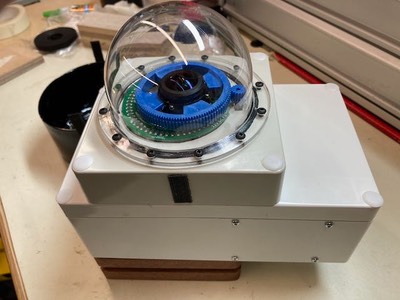Since my mk2 ScopeDog I had been calculating tracking rates using classic sphercial trigonometry. Quite straightforward and the method used in professional observatories. But their scope mounts are level!
Whilst the Nexus DSC takes care of positional accuracy with a tilted mount, and the digital finder measures absolute posiion for refinements, the calculated tracking rates in Az & Alt werent taking account of any tilt. This means the scope needs to be fairly well levelled when set up. Any tilt results in tracking slowly losing the target over a period of some minutes.
With the mk4 ScopeDog (no Nexus DSC) I really needed to do my own 2 star alignment to determine tilt and improve tracking. A couple of days thinking how to do it werent very fruitful - just a headache!
Serge at Astrodevices suggested a few ideas, and a little while later I found an excellent document written by Toshimi Taki that covers it - but it was all based on matrix operations. I’d forgotten completely how to do this - so a day of revision followed. Fortunately Python has a lot of built in (NumPy) matrix operation methods.
Having coded the technique and tried it on some test data - I’m impressed and keen to incorprate it into ScopeDog mk4, and possibly mk3.



